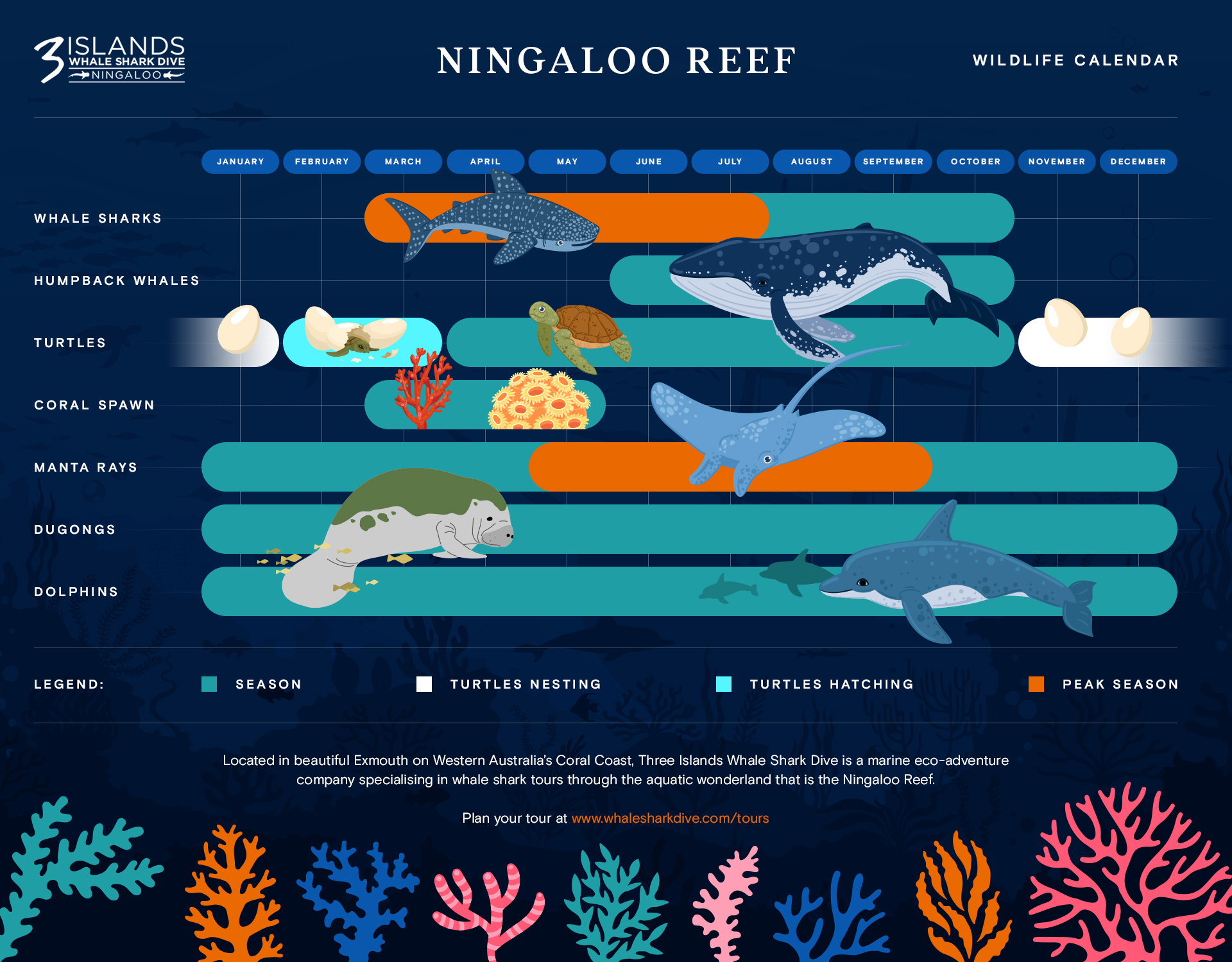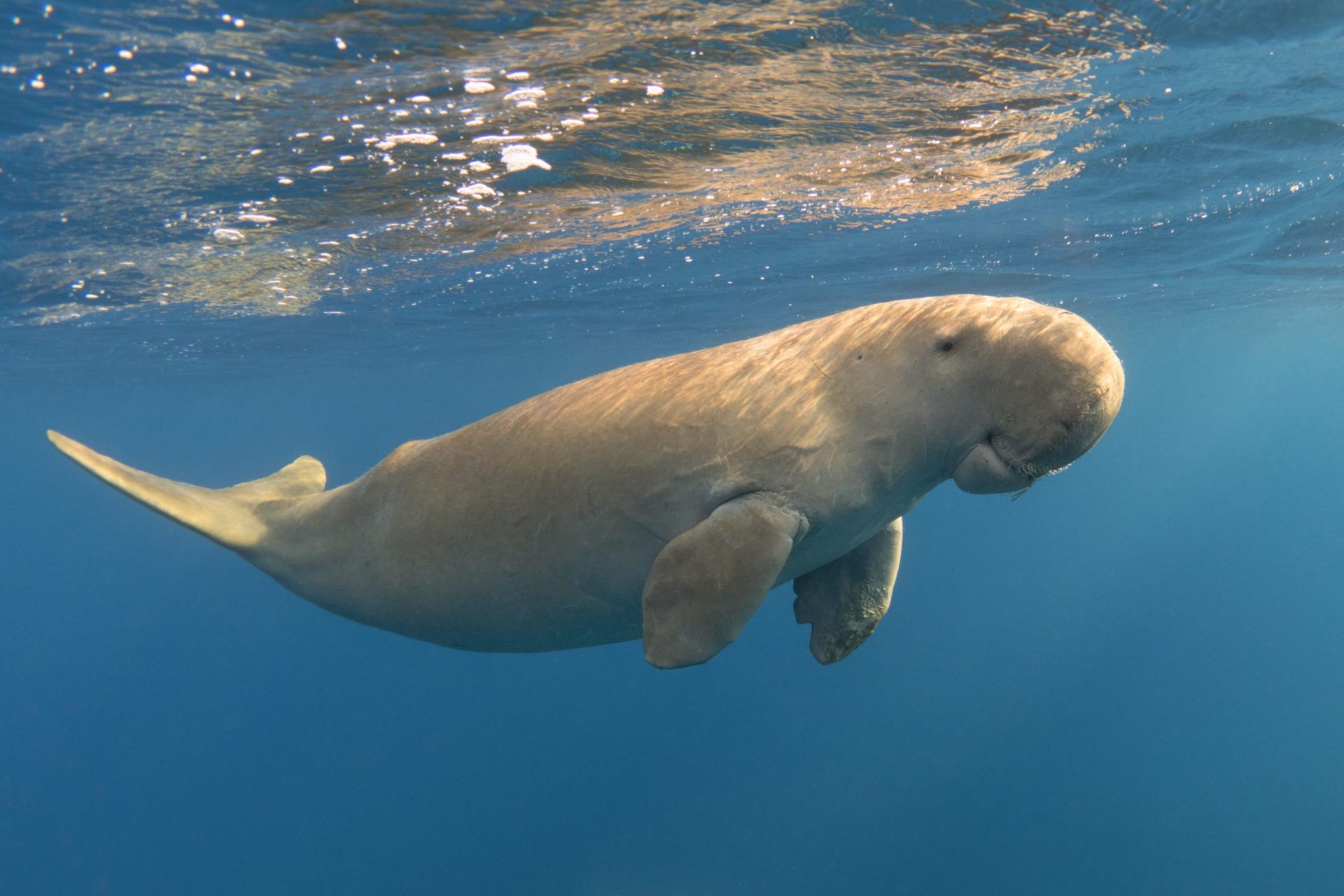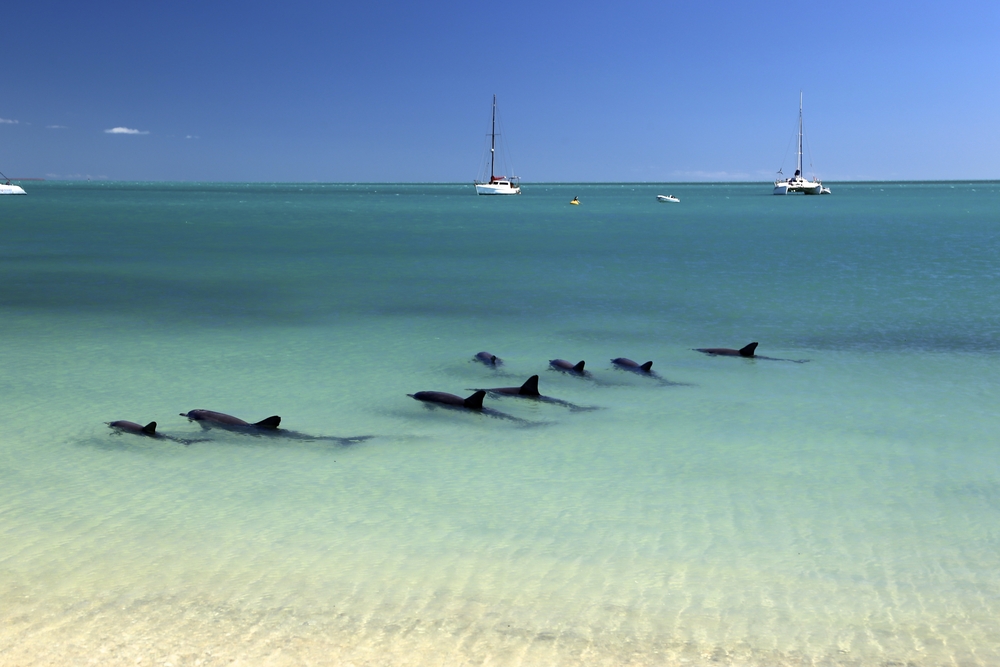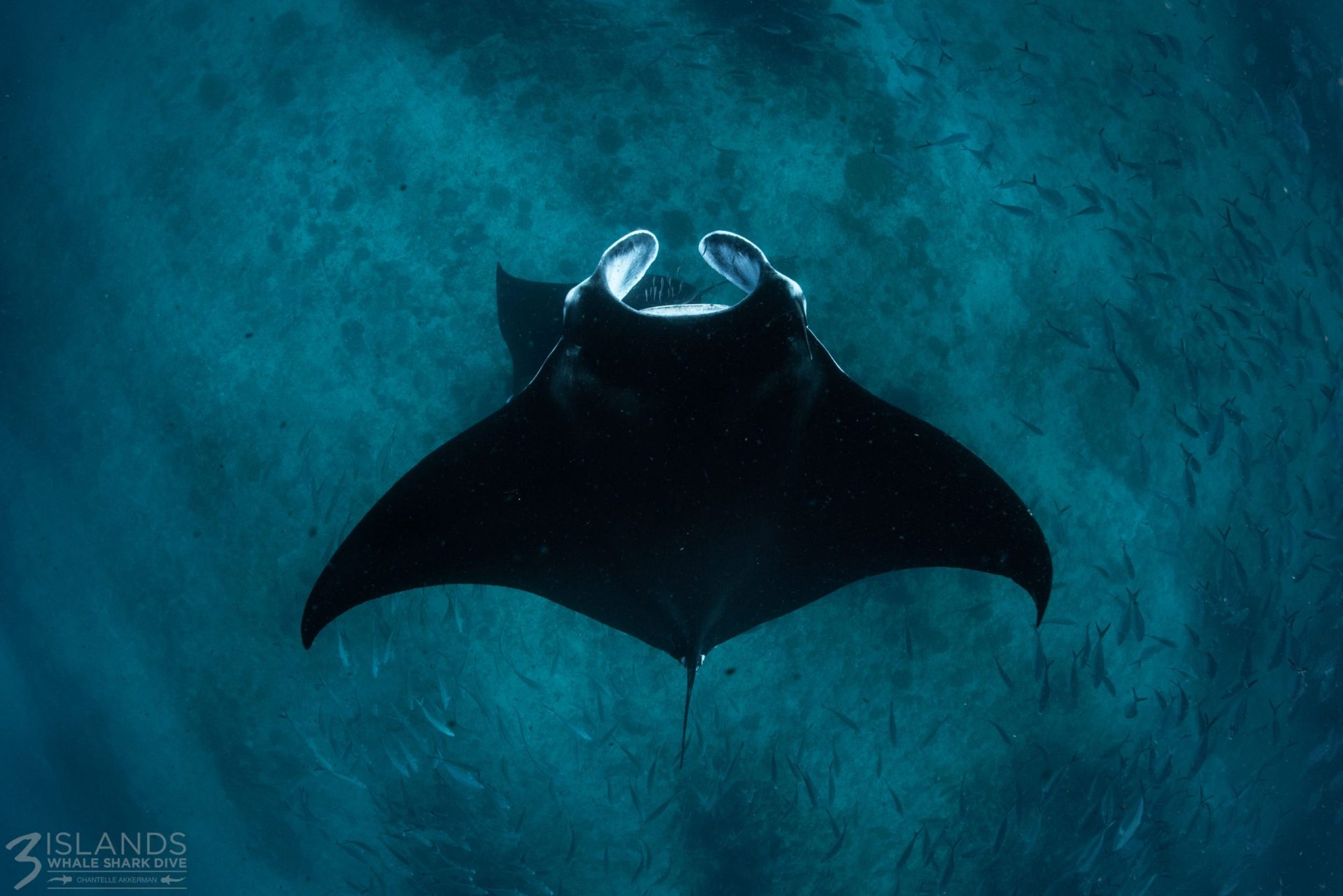Seasons of Wildlife
Ningaloo Marine Calendar

Ningaloo Reef in Western Australia is home to a stunning variety of marine wildlife, offering exceptional opportunities for watching and diving. The movements and presence of these creatures are greatly influenced by seasonal changes, ocean currents, and water temperature, which guide their breeding and migration patterns.
Although there might be slight variations in these patterns, our Ningaloo Reef marine calendar serves as a reliable guide. It helps you identify the best times to see specific species during the year, ensuring you can perfectly plan your visit to Exmouth.
REEF LIFE

Whale Sharks
The Ningaloo Reef’s peak Whale Shark season starts in March and runs through to the end of July, where they are spotted almost on a daily basis. In the shoulder season, these gentle giants of the sea can still be spotted later in the year during our Off-Peak Whale Shark & Ningaloo Reef Tour.

Humpback Whales
Humpback Whales are typically seen during the months of June-October during their annual migration from their summer feeding grounds in the icy cold waters of Antarctica up to their summer breeding grounds on the North West Shelf. It’s estimated that 40,000 whales pass through Ningaloo’s glistening waters each year, with the waters providing a refuge and resting stop for mothers and their newborn calves on their long journey back to Antarctica.
Humpback Whales
Humpback Whales are typically seen during the months of June-October during their annual migration from their summer feeding grounds in the icy cold waters of Antarctica up to their summer breeding grounds on the North West Shelf. It’s estimated that 40,000 whales pass through Ningaloo’s glistening waters each year, with the waters providing a refuge and resting stop for mothers and their newborn calves on their long journey back to Antarctica.


Dugongs
Dugongs, often called the Sea Cow, can be seen all year round within the pristine waters of Ningaloo. Despite their vulnerable conservation status, these gentle giants find a safe haven here. They’re known for their serene nature and vegetarian diet, grazing on the abundant seagrass beds of the region. Weighing as much as 400 kg and growing up to 3 metres in length, these shy yet sizable marine mammals are a common and enchanting presence, adding to the unique biodiversity of Ningaloo.

Dolphins
Dolphins, a symbol of the dynamic marine life at Ningaloo, can be observed all year round. Each species presents a unique aspect of this vibrant underwater world:
- Bottlenose Dolphins: The most common sighted, these playful mammals are often seen enjoying the crystal clear shallow lagoon waters of Ningaloo.
- Australian Humpback Dolphins: A more elusive and threatened species, they form one of the largest populations in the Indo-Pacific region, making the lagoons their preferred playground.
- Spinner Dolphins: Known for their dramatic showmanship, these dolphins occasionally grace the waters with their ability to leap and spin up to seven times in a single jump, creating a spectacular display in the picturesque clear waters of Ningaloo.
Dolphins
Dolphins, a symbol of the dynamic marine life at Ningaloo, can be observed all year round. Each species presents a unique aspect of this vibrant underwater world:
- Bottlenose Dolphins: The most common sighted, these playful mammals are often seen enjoying the crystal clear shallow lagoon waters of Ningaloo.
- Australian Humpback Dolphins: A more elusive and threatened species, they form one of the largest populations in the Indo-Pacific region, making the lagoons their preferred playground.
- Spinner Dolphins: Known for their dramatic showmanship, these dolphins occasionally grace the waters with their ability to leap and spin up to seven times in a single jump, creating a spectacular display in the picturesque clear waters of Ningaloo.


Manta Rays
Manta Rays are visible year-round in Ningaloo’s waters, with their numbers peaking from May to September. During this period, large gatherings of these majestic creatures can be seen gracefully soaring through the sea.
These gentle giants, reaching lengths of up to 7 metres, are unlike their smaller cousins, the stingrays, as they lack a barb. Known for their highly interactive and playful nature, swimming alongside them offers a mesmerising experience.
If we happen to find a manta ray during your tour and we have the time, we’ll try our best to get you in the water for an interaction. However, if swimming with manta rays is on your bucket list, then a visit to Coral Bay is a must.
Coral Spawns
The mass coral spawning event at Ningaloo is a marvel to behold, typically taking place in March, April, and May. This extraordinary occurrence, which significantly contributes to attracting large numbers of whale sharks, unfolds over a single night or several successive nights. This natural phenomenon is intricately tied to factors like seawater temperature, lunar phases, and the daily cycle of light and darkness.
Embark on an Exmouth Expedition to Swim with Whale Sharks!
Join us on one of our acclaimed Exmouth snorkelling tours for an encounter that goes beyond the ordinary. Immerse yourself in the crystalline waters of Ningaloo Reef, where the majestic whale sharks glide serenely in their natural habitat. Our dedicated team at Three Islands Whale Shark Dive is committed to making your underwater adventure exceptional and eco-friendly. With our keen eye for safety and our exclusive no-sighting policy during the peak season, your marine voyage is not just a tour—it’s a pledge of unforgettable moments.
Dive in and let Exmouth’s underwater splendour unfold before you!

